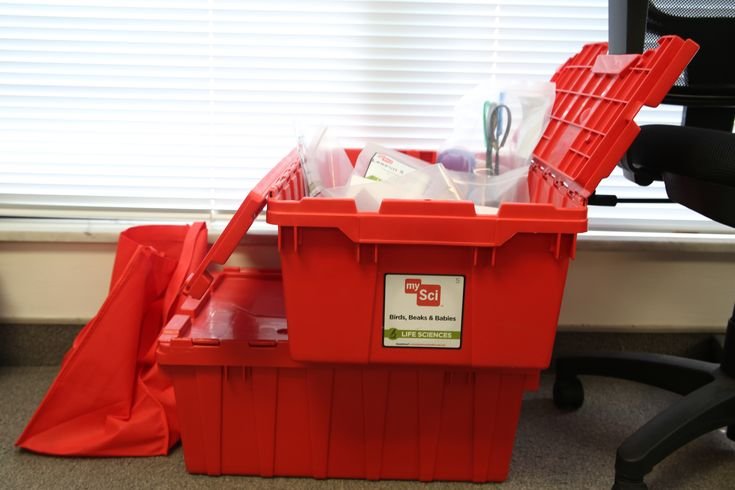Equitable Access to High-Quality Instructional Materials in K-5 Science for all Brown County Students
All students deserve educational resources and instruction that prepares them for college or career success. The Einstein Project, with financial support from Brown County United Way is ensuring that all Brown County students have access to instructional materials designed for the vision of the Framework for K-12 Science Education and the Next Generation Science Standards.
For the next two years, all Brown County K-5 educators can select one FREE mySci unit to use in their classroom.
After the 2026-27 school year, these kits will be available to participating teachers for the cost of consumable materials. ($150 savings per use!)
mySci has been developed by the Institute for School Partnership at Washington University in St.Louis, Missouri and is dedicated to creating equity in science learning through hands-on, inquiry-based curriculum that nurtures critical thinking and creativity.
If a teacher decides to use a mySci unit in their classroom, professional learning is required prior to receiving your unit. This will help you to experience your new unit in its entirety so that you are ready to use it with your students.
Brown County K-5 educators may select 1 free unit to lease.
Kindergarten
6 Lessons | 24-27 Days
In this unit, students view photographs of garbage in the Mississippi River. Throughout the unit, students will investigate the problem to gather information about why the garbage got there, the types of garbage in the water, and how the garbage impacts living things. They will use their learning to design, test, and communicate solutions to clean up the garbage in the Mississippi River.
First Grade
7 Lessons | 33-34 Days
In this unit, students are introduced to biomimicry, or using inspiration from nature to solve human problems. They make observations with hands-on plant investigations to identify parts of plants and their functions. They connect each plant part back to biomimicry, thinking about how they could be used as inspiration to help protect a campsite. They make comparisons between plant parts as a plant grows, and throughout seasons, to determine how plants change, and how young plants are alike, but not exactly like, their parents.
Second Grade
6 Lessons | 28 Days
In this unit, students view photographs and maps of the Sleeping Bear Dunes. They read an article about how the dunes are getting smaller, and how this affects animals and people in the area. Throughout the unit students will investigate the problem to gather information about how wind and water change the earth over time. They will use their learning to design solutions that protect the dunes from changing.
6 Lessons | 23-27 Days
In this unit, students investigate the history and discoveries of early Inuit, Polynesian, and Nordic explorers. They use globes and maps to track their expeditions, create salt dough landform maps of their areas, and use tiles to model the different vessels they used to explore. Students connect each piece of their adventures to create a full picture of their early expeditions and use strategies from early explorers to create a map of their own school or playground.
Third Grade
7 Lessons | 23-29 Days
In this unit, students learn about force and motion through carnival games. They build and play a variety of games to investigate where force is applied, and why and how objects move. They use data from their investigations as evidence to identify balanced and unbalanced contact forces, and how they can use different amounts of force to cause objects to move. They ask questions and investigate magnetic forces, using data collected as evidence of cause and effect relationships. Throughout the unit, students will connect their findings back to the problem and solution: using force and magnetism to design a pinball machine for the carnival.
Fourth Grade
8 Lessons | 35 Days
At the start of this unit, students view a slide deck of photos and listen to a podcast to make observations and ask questions about the Glen Canyon Dam. Additionally, students will collect evidence about why the Glen Canyon Dam is controversial and how it impacts people, animals, and the environment..
7 Lessons | 29-34 Days
In this unit, students will figure out key earth science, physical science, and engineering ideas through the lens of tsunami waves. Additionally, students will start thinking about how tsunami warnings could be sent to people over long distances once they are detected. At the end of the unit, students will design, test, and compare tsunami warning messages they code themselves.
Fifth Grade
7 Lessons | 27-30 Days
At the start of this unit, students discuss their favorite pizza toppings and watch a video to start to consider why we eat food and ask questions about how a pizza farm works to grow the ingredients on pizza. Throughout the unit, students will conduct investigations and collect evidence about how energy and matter enter into food and how they cycle and move through the environment and living things.
8 Lessons | 32-34 Days
Students investigate the objects we can observe in the sky, including the Sun, Moon, planets, and stars. They learn about how some of these objects create their own light, like stars, while others reflect light, like the Moon and planets. Then, students dive into the study of celestial objects like the Sun, Moon, planets, and stars, examining how they shape our understanding and measurement of time. They are prompted to construct narrative stories full of scientific concepts, creatively illustrating the past and present methods of timekeeping and organization of calendars.
Einstein Project is a 501(c)(3) non-profit STEM resource center driven to empower educators and inspire learners.
















